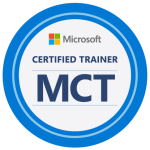Azure Cloud, DevOps resources and blog
-

How Microsoft Entra ID is used as a directory for cloud apps
Microsoft Entra ID (formerly Azure Active Directory, or Azure AD) is used as a cloud-based directory service that manages and secures user identities, access, and permissions for cloud applications. It serves as a central identity provider for applications, services, and resources both within Microsoft’s ecosystem… [ Read more ]
-

Azure Virtual Network explained in detail
Azure Virtual Network (VNet) is one of the fundamental building blocks in Azure that allows you to securely connect Azure resources to each other, the internet, and on-premises environments. It provides a private network where you can define and control the IP addressing, DNS settings,… [ Read more ]
-

Compare Microsoft Entra ID to Active Directory Domain Services (AD DS)
Microsoft Entra ID (formerly Azure Active Directory, or Azure AD) and Active Directory Domain Services (AD DS) are both identity and access management solutions provided by Microsoft, but they serve different purposes and are designed for different environments. Below is a comparison of the two:… [ Read more ]
-

Subnets and Subnetting in Azure – Features and Use-cases
In Azure, subnets are an integral part of your Virtual Network (VNet) architecture. Subnets allow you to partition a VNet's IP address space into smaller, more manageable segments. Subnetting helps you organize and control the flow of network traffic, segment security policies, and ensure efficient… [ Read more ]
-

Know everything about Azure Virtual Network – Features and Components
An Azure Virtual Network (VNet) is one of the foundational building blocks for your private network in Azure. It allows Azure resources to securely communicate with each other, the internet, and on-premises networks. Azure VNets provide isolation, segmentation, and secure communication between virtual machines (VMs),… [ Read more ]
-
Learn how to configure Virtual Machine Scale Sets on Azure
Azure Virtual Machine Scale Sets (VMSS) allow you to deploy and manage a set of identical VMs that can automatically scale to meet demand. VMSS provides high availability, load balancing, and automated scaling of your application, helping ensure that it can handle varying traffic loads… [ Read more ]
-
Learn how to configure Azure Blob Storage in Azure
Configuring Azure Blob Storage involves creating and managing a storage account, setting up the necessary blob containers, and configuring access permissions. Below is a step-by-step guide for configuring Azure Blob Storage. Create a Storage Account Azure Blob Storage requires a storage account as its foundation.… [ Read more ]
-
Learn how to choose your Storage account settings in Azure
Choosing the right account settings in Azure involves configuring your Azure resources, like storage accounts, to meet your business, performance, and compliance requirements. Here's a guide to help you make informed decisions about your account settings in Azure. Choose the Storage Account Type Azure provides… [ Read more ]
-
Learn how to assign Blob Access Tiers in Azure
In Azure Blob Storage, access tiers define the cost and performance characteristics of the stored data. Azure provides different access tiers to optimize storage costs for different usage patterns: Hot: Optimized for data that is accessed frequently. Cool: Optimized for infrequent access data that is… [ Read more ]
-
Learn all about Virtual Machine Storage in Azure
Determining the right Virtual Machine (VM) storage in Azure is essential for ensuring optimal performance, cost efficiency, and reliability. Azure provides different types of storage options for VM disks, each designed to meet specific performance and availability needs. Here's how to determine the appropriate VM… [ Read more ]
-
Learn all about Blob Storage pricing in Azure
Azure Blob Storage pricing is determined by a combination of several factors, including the storage tier, data transfer, redundancy options, and additional features like lifecycle management. Below is a detailed breakdown of the factors influencing Blob Storage pricing in Azure: Storage Tiers Azure Blob Storage… [ Read more ]
-
Learn about Virtual Machine Size in Azure that fits your requirement
Determining the right Virtual Machine (VM) sizing in Azure is critical for optimizing performance and cost. Azure provides a variety of VM sizes and series, each designed for specific types of workloads. The right sizing ensures your application runs smoothly without over-provisioning (which increases costs)… [ Read more ]
-
Learn about various Azure tools to create a Storage Account and how to choose among them
When creating a storage account in Azure, there are several tools you can use depending on your preferences and requirements. Each tool offers different features, ease of use, and access methods. Here are the primary tools available for creating a Storage Account in Azure. Azure… [ Read more ]
-
Learn about Update Domains and Fault Domains on Azure
Update Domains and Fault Domains are fundamental concepts in Azure’s high availability architecture, particularly when using Availability Sets. Both are designed to help ensure that your applications remain available and resilient during hardware failures, maintenance events, and other disruptions. Here's a detailed review of both… [ Read more ]



















